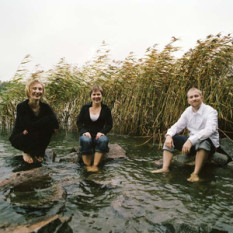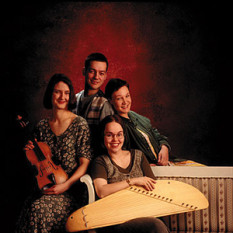A kantele (harppu in Sami) is a traditional plucked string instrument of the dulcimer and zither family native to Finland and Karelia. Its relatives can be found throughout the world, including Estonian kannel, Mari kusle, Russian gusli, Latvian kokle, and Lithuanian kanklės. Together these instruments make up the family known as Baltic psalteries. Kantele is also related to the ancient Asian instruments such as Chinese gu zheng and Japanese koto.
The kantele has a distinctive bell-like sound. The Finnish kantele generally has a diatonic tuning though small kantele with between 5 and 15 strings are often tuned to a gapped mode missing a seventh and with the lowest pitched strings tuned to a fourth below the tonic as a drone. Players hold the kantele in their laps or on a small table. There are two main techniques to play, either plucking the strings with their fingers or strumming unstopped strings (sometimes with a matchstick). The small and concert kanteles have different, though related, repertoires.
There have been strong developments for the kantele in Finland since the mid-20th century, starting with the efforts of modern players such as Martti Pokela in the 1950s and 1960s. Education for playing the instrument starts in schools and music institutes up to conservatories and the Sibelius Academy, the only music university in Finland. Even some artistic doctoral studies have been made at the Academy with traditional, western classical and electronic music. A Finnish luthiery, Koistinen Kantele, has developed also an electric kantele, which employs pick-ups similar to those on electric guitars. It has gained popularity amongst Finnish heavy metal musicians such as Amorphis. .

















